Pediatric cerebrovascular disease and stroke
People don’t often think of children having strokes, but some cerebrovascular (ce·re·bro·vas·cu·lar) diseases can cause a stroke, even in children. That’s why it’s important to recognize the signs of these diseases and know when to seek treatment for your child.
At Children's Health℠, we know how cerebrovascular diseases in children differ from those in adults. We are uniquely equipped with top-notch technology, expert providers and key partnerships to treat cerebrovascular diseases – and help prevent stroke in children.
What is pediatric cerebrovascular disease and stroke?
Cerebrovascular diseases affect the blood vessels and blood flow in the brain. Although cerebrovascular diseases are rare in children, they increase the risk of brain damage and may lead to a stroke. A stroke happens when blood flow to part of the brain is disrupted by either a broken blood vessel or a blood clot.
Our specialists have expertise in diagnosing cerebrovascular diseases in their early stages and providing advanced treatment before they become life-threatening.
What are the types of pediatric cerebrovascular disease and stroke?
Cerebrovascular diseases in children include:
Arterial dissection - A tear in the inner lining of an artery can cause bleeding in the brain.
Arteriovenous malformations (AVMs) - In these abnormal tangles of blood vessels, capillaries are missing, so arteries and veins are directly connected, disrupting the brain’s blood and oxygen supply and causing a risk of bleeding.
Brain aneurysms - A weakened, bulging area of an artery can leak small amounts of blood or burst (rupture), causing bleeding in the brain.
Cavernous malformations - In these clusters of capillaries, the tiny blood vessels are abnormally enlarged, with thin walls that can leak or burst.
Moyamoya disease - A narrowed area in an artery to the brain can cause a cluster of tiny blood vessels to form around it. These tiny vessels try to compensate for the decreased blood flow, but they are more fragile and may burst or become clogged, causing stroke.
Vein of Galen malformations (VOGM) - In this type of AVM, arteries connect directly to one of the large veins, without capillaries to slow the blood flow back to the heart.
The main types of pediatric stroke are:
Ischemic stroke - A blood clot blocks an artery, or narrowing in an artery, in or leading to the brain, preventing blood from reaching that area of the brain. The lack of blood and oxygen damages that part of the brain.
Hemorrhagic stroke - A blood vessel in the brain bursts, causing bleeding that deprives part of the brain of oxygen and creates pressure on surrounding brain tissue.
Cerebral sinovenous thrombosis - A blood clot can form in a large vein (venous sinus) that carries blood from the brain back to the heart.
What are the signs and symptoms of pediatric cerebrovascular disease and stroke?
Arm, leg, or face weakness on one side
Difficulty speaking
Seizures
Intense headaches
Difficulty moving and walking
Confusion
Blurry or double vision
In children, symptoms of a stroke can be intense and come on suddenly.If your child is experiencing any of these symptoms, call 911 immediately.
F.A.S.T. is an easy way to remember the signs of a stroke.
The acronym stands for:
F = face drooping: One side of their face is drooping or numb, and their smile is uneven.
A = arm weakness: One arm is weak or numb. When they lift both arms at the same time, one arm may drift downward.
S = speech difficulty: They may have difficulty speaking or slur their speech. They can't repeat a simple sentence correctly.
T = time to call 911: If your child shows any of these symptoms, even if they go away, call 911 immediately. Make note of the time the symptoms first appeared.
How is pediatric cerebrovascular disease and stroke diagnosed?
If your child shows signs and symptoms of a stroke, we quickly evaluate your child so that we can begin treatment immediately. To diagnose other cerebrovascular diseases, our specialists begin with a physical exam. We ask you about your child’s medical history and signs or symptoms that you’ve noticed.
For cerebrovascular diseases and strokes, your child might need tests such as:
Blood tests - We test a small sample of your child’s blood to check for clotting disorders, sickle cell disease, inflammation or infection.
Brain imaging - Computed tomography (CT) scans and magnetic resonance imaging (MRI) provide details of your child’s brain. We use specialized brain imaging to look for problems with blood vessels or signs of bleeding in the brain. Because imaging requires your child to lie still, we may provide medication to help them sleep during the test.
MR angiogram - A special type of MRI can show details of blood vessels. We use MRA to check for narrowing, blockages, tangles or other problems with blood vessels in the brain.
Electroencephalography (EEG) - Electrodes attached to your child’s head record the brain’s electrical activity. Our neurologists use EEGs to find out more about seizures, such as their location in your child’s brain.
What causes pediatric cerebrovascular disease and stroke?
In many cases, the exact causes of cerebrovascular disease in children are unknown. Blood vessel conditions can also cause stroke in children. These conditions can result from the narrowing of blood vessels over time.
Some known causes of cerebrovascular diseases and strokes in children include:
How is pediatric cerebrovascular disease and stroke treated?
At Children’s Health, our team has extensive expertise in all types of surgery, minimally invasive procedures and nonsurgical treatments for cerebrovascular diseases. Your child’s treatment depends on the type of cerebrovascular disease, its location in the brain or spine and other factors.
Treatment options include:
Medications - For ischemic stroke, our neurologists provide rapid treatment to restore blood flow to the brain, such as blood thinners (anticoagulants or thrombolytics).
Endovascular procedures - Our interventional radiologists and neurosurgeons (doctors who treat brain and spinal cord conditions) perform minimally invasive procedures using a catheter to remove blood clots or repair blood vessels in the brain. This tool is a super small and thin tube with surgical instruments on the end that we insert into a blood vessel in your child’s groin. Endovascular procedures avoid the need for an incision in the head, so your child may have a safer procedure and faster recovery.
Microsurgery - These minimally invasive procedures use small incisions and openings in the skull to access the brain. Our neurosurgeons use high-powered microscopes to navigate around critical brain structures to treat the blood vessels involved in cerebrovascular diseases.
Open surgery - In some cases, an open procedure may be the best approach to treat a cerebrovascular disease or stroke. Our neurosurgeons make larger incisions and openings to access the area for treatment.
Follow-up care - After treatment, your child will need follow-up care to monitor their health. Depending on the area of the brain affected, your child may have difficulty with movement, vision, speech or learning.
Rehabiliation - Children’s Health offers comprehensive rehabilitation with speech-language, physical and occupational therapy for children who have had a cerebrovascular disease or stroke.
Pediatric cerebrovascular disease and stroke doctors and providers
Our team includes pediatric neurologists, neurosurgeons and neuroradiologists who have specialized training and experience in cerebrovascular disease and stroke. We focus on treating the conditions, their causes and their symptoms to help your child recover and avoid future strokes.
 Pamela Okada, MDEmergency Medicine Physician
Pamela Okada, MDEmergency Medicine Physician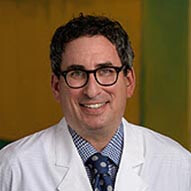 Brad Edward Weprin, MDPediatric Neurosurgeon
Brad Edward Weprin, MDPediatric Neurosurgeon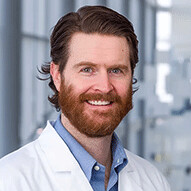 Wilmot Bonnet, MDPediatric Neurologist
Wilmot Bonnet, MDPediatric Neurologist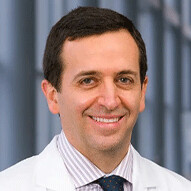 Bruno Braga, MDPediatric Neurosurgeon
Bruno Braga, MDPediatric Neurosurgeon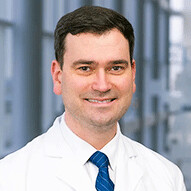 Rafael De Oliveira Sillero, MDNeurosurgeon
Rafael De Oliveira Sillero, MDNeurosurgeon Michael Dowling, MDPediatric Neurologist
Michael Dowling, MDPediatric Neurologist Amy Hogge, MDPediatric Anesthesiologist
Amy Hogge, MDPediatric Anesthesiologist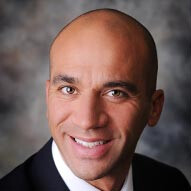 Darryl Miles, MDCritical Care Specialist
Darryl Miles, MDCritical Care Specialist G. Pride, MDPediatric Neuroradiologist
G. Pride, MDPediatric Neuroradiologist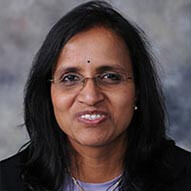 Lakshmi Raman, MDCritical Care Specialist
Lakshmi Raman, MDCritical Care Specialist Rita Saynhalath, MDPediatric Anesthesiologist
Rita Saynhalath, MDPediatric Anesthesiologist Dale Swift, MDPediatric Neurosurgeon
Dale Swift, MDPediatric Neurosurgeon Brett Whittemore, MDPediatric Neurosurgeon
Brett Whittemore, MDPediatric Neurosurgeon Andrea Wahlberg, PhDPediatric Neuropsychologist
Andrea Wahlberg, PhDPediatric Neuropsychologist